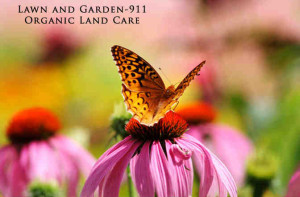
Speckled fritillary butterfly on native coneflower at the home of Garden-911 in Easton, MA. [Photo copyright 2017 Carol Lundeen]
BIDDING ENDS AT 4 P.M. TODAY!


Speckled fritillary butterfly on native coneflower at the home of Garden-911 in Easton, MA. [Photo copyright 2017 Carol Lundeen]
BIDDING ENDS AT 4 P.M. TODAY!
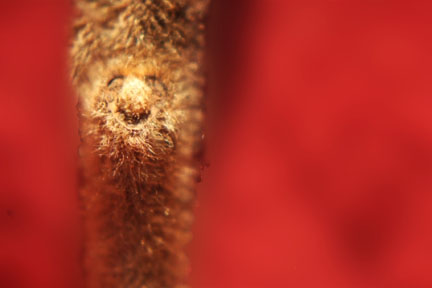
Winter bud inset in a leaf scar of Rhus typhina, staghorn sumac in Sharon, MA. It looks like the face of a lion, which is how I remembered it for my RI Certified Horticulturist exam. [Photo Copyright 2017 Carol Lundeen].
Did you have any idea that a winter twig could be so adorable as the one shown above? Me neither. Until Dr. Susan Gordon taught me how to notice and appreciate the diversity of these things. I want to get so I can tell the winter twig of a glossy false buckthorn from a black cherry as easily as a dalmation from a beagle. I aced both the written and ID portions of my exam Monday night. I’m certifiably certified, so happy there’s so much more to learn, so thankful to everyone who’s helped me, and I can’t wait for the new gardening season!
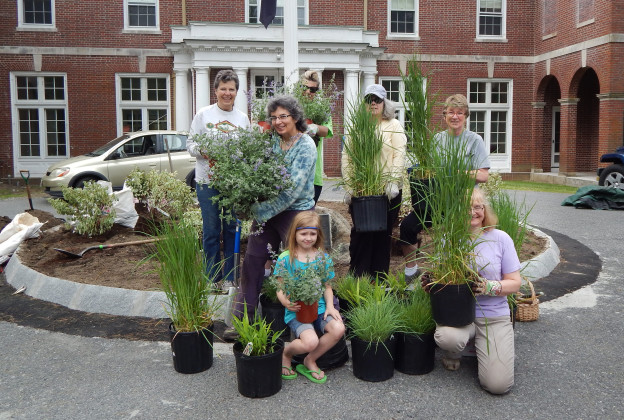
Super happy to share that I’m a Landscape Design Challenge Winner, donating my talents for community service for Easton as a proud member of the Easton Garden Club. Big surprise: I included lots of native plants in my winning designs.
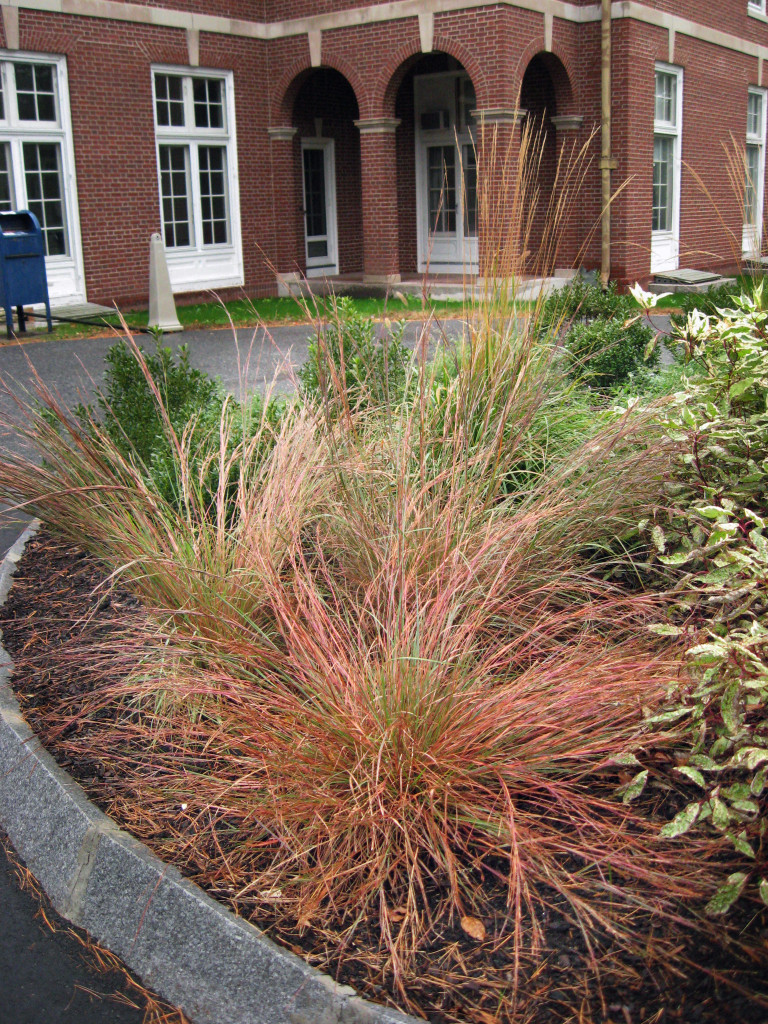
Little bluestem is a native plant I featured in the design at the Easton Town Offices flagpole island bed, created in conjunction with the Easton Garden Club’s Landscape Design Challenge. The bluestems’ red colorization increases with the cooling days of autumn, and it holds its horticultural interest until spring, all wild and tangled in the wind and weather.
There’s magic in the air again this fall, as silky puffs burst out of butterfly weed follicles like bright white fireworks bursting out of a purse, each carrying what looks like an aged miniature copper penny that is actually a seed about to take flight.
I had the pleasure of volunteering with the URI Master Gardeners at Roger Williams Park Botanical Center Display Garden yesterday, weeding and edging beds (aka bed maintenance) just in time to spiff up for this weekend’s plant sale, URI Master Gardeners soil testing and info kiosk event, and the Botanical Center Conservancy Photography Contest Exhibition.
Even though I garden practically every day, I was in awe at the early fall colors in the Display Garden. Blooming plumes on grasses push back and forth in the wind, contrasted against stands of perennials, some in full bloom and full of pollinators, others done blooming but still beautiful with their fall-colored crayon foliage and seeds about to drop.
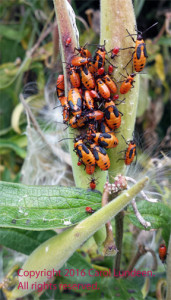
Nymphs of big milkweed bugs, Oncopeltus fasciatus, on butterfly weed follicles at Roger Williams Park Botanical Center Display Garden
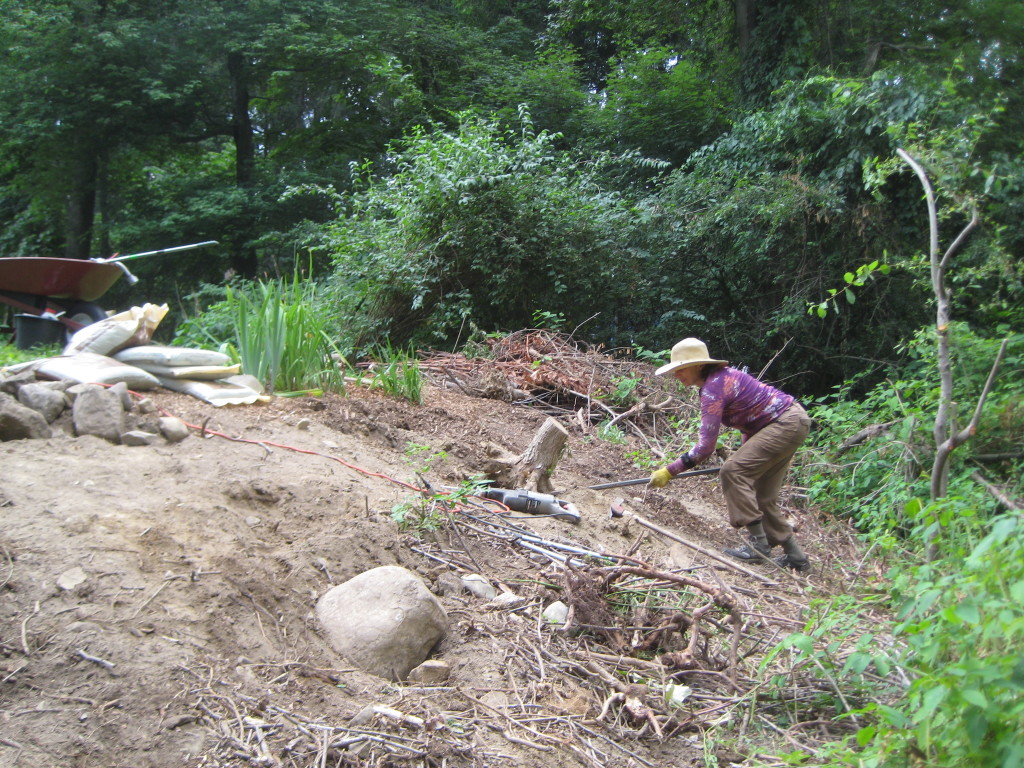
Carol removes a stump after clearing a tangle of exotic invasive plants on the sloped perimeter of a client’s lawn in Sharon, MA.
Trees and shrubs, vines and weeds getting the best of the perimeter of your yard? Reclaim it! That’s what I did for a client in Sharon, MA, They were getting ready to sell their house, and I wanted to leverage their back yard with an expansive view to a trio of established but hidden ash trees on the edge of the property. So I cut down a few small trees and hacked out their roots, removed lots of exotic invasive plants like multi flora rose, Asian bittersweet and garlic mustard…though the knot weed is still a work in progress.
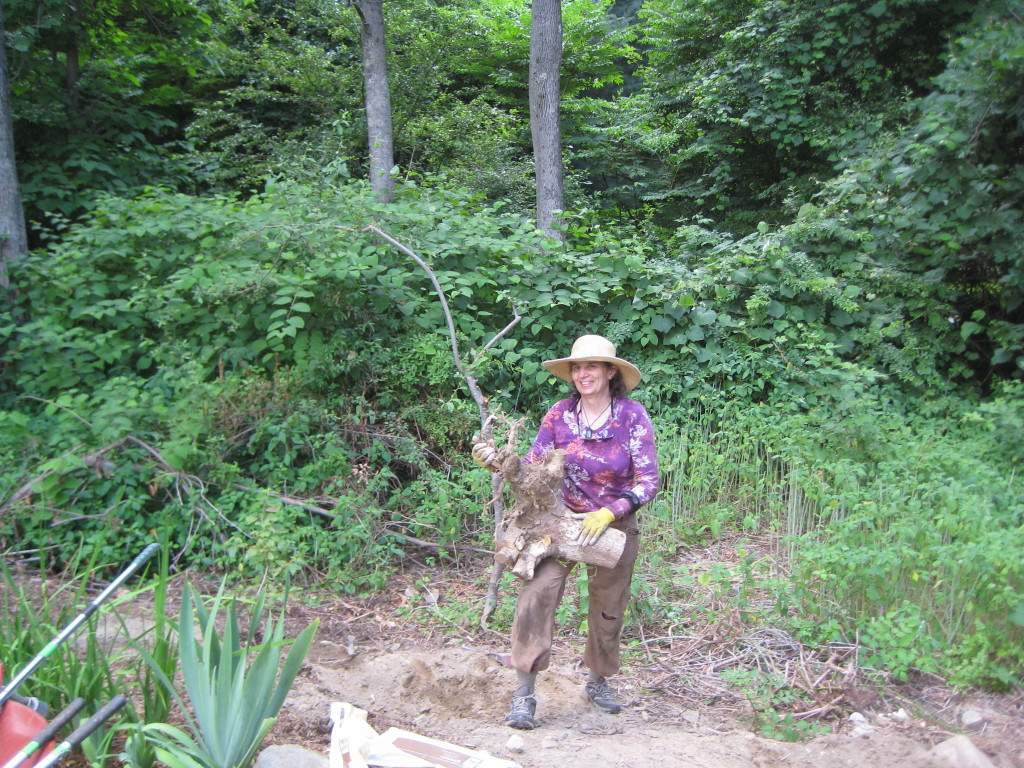
Carol didn’t let this stump stump her. Her reciprocating saw and pry bar and patience did the trick. She did this to open the view to the large trees in the background. It’s hard to see, but behind the iris is a native Viburnum shrub that had been hidden by overgrowth.
Enjoy a free, fun-filled, family oriented afternoon, and discover how you can make a difference for the next generation!
If you want to support pollinators, come find my table at the Sustainable Sharon Coalition’s Green Day on May 7th from 12-4 on High Street, Sharon Center, between the Sharon Public Library & Congregational Church. I’ll be selling perennials with high horticulture and pollinator value, and Rudbeckia fulgida v fulgida will be the star of the show.
(In case of inclement weather, the event will be held inside the Congregational Church Parish Hall.)
 You can participate the Million Pollinator Garden Challenge by turning your yard or garden into a Certified Wildlife Habitat via National Wildlife Federation’s Garden for Wildlife program. It’s as simple as providing food, water, cover and places to raise young for pollinators like bees, butterflies and hummingbirds. Then visit our website to certify your yard.
You can participate the Million Pollinator Garden Challenge by turning your yard or garden into a Certified Wildlife Habitat via National Wildlife Federation’s Garden for Wildlife program. It’s as simple as providing food, water, cover and places to raise young for pollinators like bees, butterflies and hummingbirds. Then visit our website to certify your yard.
When you certify, you’ll get a personalized certificate, a special garden flag designating your yard as a Certified Wildlife Habitat, a one-year membership to National Wildlife Federation, six digital issues of National Wildlife magazine, a subscription to the monthly Garden for Wildlife e-newsletter, and a discount on wildlife gardening products from National Wildlife Catalog.
Most importantly, you’ll also start attracting beautiful pollinators and get the satisfaction of knowing that you’re making a difference. Each Certified Wildlife Habitat counts towards the ultimate goal of creating one million pollinator-friendly gardens by the end of 2016.
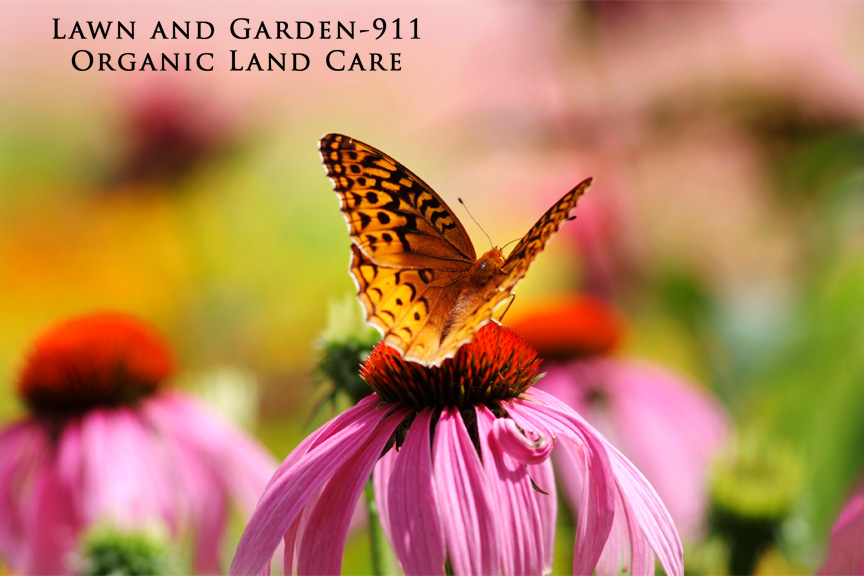
Native plants attract native pollinators. This spangled fritillary butterfly lingered quite a while on this pink Echinacae in my front yard butterfly garden last fall.
75 degrees today in North Easton, and I’m soaked with spring fever, even now, after dark. Tree frogs are croaking it up, salamanders getting ready for a big night tomorrow (I hope), and I got to spread leaf mold on a clients’ heirloom perennial garden today. Hurray!
Leaf mold is about the best medicine ever for improving soil health, but let’s not leave out compost. Leaf mold is decayed leaves, preferably chopped with a mower or shredder, that have been watered to dampness (like a wrung out sponge), piled up, and left to sit a good while to be broken down by members of the tiny microbes and insects society. You know it’s about ready to use when you can no longer recognize the leaves as leaves and it’s all nice and fluffy. A bit about using compost as a soil amendment later.
I’ll be spreading leaf mold on my own garden tomorrow. It sounds gross, I know, but soon enough the Echinaca plant pictured in the photo will be again attracting fritillary butterflies and hummingbirds to my front yard, in part thanks to the natural magic that happens from feeding soil with leaf mold.
I love spring fever, and we have a nice steady rain coming tomorrow, so drink it in!